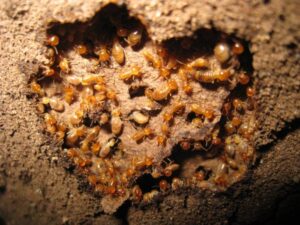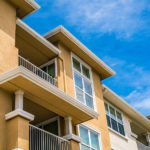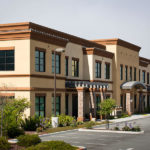The Differences Between Drywood and Subterranean Termites: How to Treat Them

Identifying Termite Species
Did you know that there are thousands of termite species in the world? They build massive mounds in Africa, contribute to rainforest ecosystems by clearing debris from the forest floor, and provide beneficial services across the globe, like improving the quality of soil and preventing forest fires. Only five percent of termite species cause household damage. The damage they cause, though, is substantial, leaving behind about five billion dollars of structural damage annually, in the United States alone. Fortunately, there are only three species of termites in California, and the most common are drywood and subterranean termites. Here, we look at these two different species, their habits and habitats, and how you can protect your home against the damage they cause.
Understanding Drywood vs. Subterranean Termites
The primary difference between drywood and subterranean termites is that, while drywood termites live inside the wood they are consuming, subterranean termites live in colonies underground. Aside from that, there are other significant differences.
- Appearance: This is tricky because, to a large extent, they look very similar. Both types of termites can be white, brown, or even translucent. They look a little bit like ants, but instead of three distinct segments, they just have a head and an abdomen. Termites have beaded antennae, mandibles on the front of their heads, and short legs. Some termites have wings, but only for a short period of time. Winged termites are in a particular stage of life: they are young, reproductive termites, seeking a place to build a new colony. Once they have found it, they will drop their wings, which is why you will sometimes see termite wings in your home, particularly around doors and windows. The main difference between drywood termites and subterranean termites in terms of appearance is that drywood termites are typically much larger than subterranean. Drywood termite swarmers have a brown colored body with a reddish colored head and smokey colored translucent wings, while subterranean termite swarmers have a black body with whitish translucent wings.
- Habitat: As mentioned, drywood termites live in wood, while subterranean termites live underground. Subterranean termites need very humid environments because they are delicate and will quickly die if exposed to dry, outdoor air. That’s why they travel from their colonies in mud tunnels to get into a house. Drywood termites have no such problem, as they can metabolize water from the wood they eat. Both types of termites are social insects, living in colonies with a highly structured social system. However, while drywood colonies are typically small, subterranean termite colonies can be enormous, housing as many as two million termites! These termites are voracious, gobbling up softer wood with their smooth mandibles, working 24 hours a day. Drywood termites can also be quite damaging to a house, though, as they tend to build several colonies in one home.
- Habits: The two types of termites behave differently, which is a good way to identify which type is in your home. Subterranean termites eat along the grain of the wood, focusing on the softer rings of the wood, while drywood termites will eat along and across it. Drywood termites make little holes in the wood, known as “kickout” holes, and they push their debris and feces out of their nests through these holes, leaving little piles of debris outside infested wood. Subterranean termites don’t do this. Interestingly, while subterranean termites don’t live inside the wood they’re eating, they sometimes make “carton nests” in trees and wall voids, creating a nest out of fecal matter to maintain the right level of humidity when they can’t get back to their underground nest.
- Infestation Signs: You’re unlikely to see termites, as they don’t come out into the open except when they’re swarming in search of new sites for colonies. It is far more likely that you will see tell-tale signs of their presence, and these signs vary between species. Two signs that both subterranean and drywood termites share are bubbling or peeling paint and a hollow sound when you tap on wood. Beyond that, the primary sign that you have drywood termites is the tiny mounds of droppings and debris outside of little holes in your walls. You won’t see that with subterranean termites, but you are likely to see their mud tubes on the exterior or interior walls of your home.
Termite Control Strategies for Different Termite Types
As you would expect, different termite species require different treatment methods. Wood treatment designed to directly address localized drywood termite colonies can be effective, but if drywood termites are extensively infesting your home, a fumigation or tenting may be necessary. This is a good way to eliminate 100 percent of drywood termites since their colonies are all contained within the house. However, this is exactly why fumigation is not effective for subterranean termites. Because they live underground, with only part of the colony invading the home, it is not enough to treat the house. With subterranean termites, you will need a barrier treatment in the soil directly outside of and under your home to address the entire colony.
Call MightyMite for Termite Control
No matter which termite species you’re dealing with, it pays to get help from termite control specialists like those at MightyMite Termite Services. At MightyMite, we’ve earned a reputation as experts in California termite control. We perform termite inspections to ensure that your home is free of termites and work hard to help you keep it that way, using treatments that are naturally derived and have a low impact on the environment. We diagnose and treat infestations with the most effective methods and unmatched warranties, solving your termite problems the first time, with an industry-best “no call-back rate.” That, combined with our experience and highly trained, licensed and professional staff, makes us the leading extermination company in the Bay Area. We understand that your home is your most important investment, so we work hard to provide excellent service, utilizing best practices to solve our customers’ termite problems. For more information, email Info@mightymitetermite.com, call us today at 408.335.7053, or contact us through our website.







